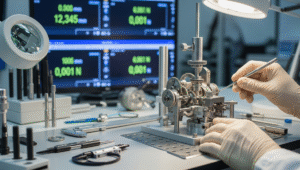In today’s world, precision matters more than ever. Whether you are working in engineering, healthcare, manufacturing, or even scientific research, accuracy plays a vital role in ensuring quality and reliability. This is where kalibraatio—the Finnish word for calibration—comes in. Calibration is the process of adjusting and verifying instruments or equipment to make sure they deliver correct and consistent measurements.
In this guide, we’ll simplify what calibration means, why it’s important, and how you can apply it in real-world situations.
What Is Kalibraatio (Calibration)?
At its core, kalibraatio is the act of checking and adjusting measuring tools against a known standard. Think of it as fine-tuning your watch to match the official time. Without proper calibration, instruments can gradually shift, turning minor inaccuracies into major issues over time.
For example:
-
In a laboratory, a scale needs to measure substances with the highest level of precision.
-
Medical equipment must give correct readings for safe patient care.
-
Industrial machines need precise measurements for efficiency and safety.
Why Is Calibration So Important?
Calibration isn’t just about accuracy—it’s about trust. Businesses, researchers, and professionals rely on calibrated tools for decision-making. Here’s why it matters:
-
Accuracy and Reliability – Ensures your measurements are correct every time.
-
Safety – Prevents dangerous mistakes in fields like medicine, aviation, or engineering.
-
Compliance – Many industries require calibration to meet international standards.
-
Cost Savings – Avoids waste, rework, or damage caused by inaccurate readings.
The Basic Process of Kalibraatio

Calibration may sound complex, but the process generally follows a few clear steps:
-
Reference Standard – Compare your instrument against a known, highly accurate standard.
-
Measurement Check – Record how much your device deviates from the standard.
-
Adjustment – Correct the device if necessary.
-
Verification – Re-check to confirm the device now meets accuracy requirements.
-
Documentation – Keep a record of calibration for audits and future checks.
Common Tools That Need Calibration
Many tools and machines require calibration to ensure accuracy, including:
-
Thermometers and pressure gauges
-
Scales and balances
-
Medical devices like blood pressure monitors
-
Industrial machinery and sensors
-
Scientific instruments in labs
Practical Tips for Easy Calibration
-
Follow a Schedule – Regular calibration prevents gradual drift from becoming a major issue.
-
Maintain Logs – Record every calibration date, outcome, and any adjustments made
-
Work with Professionals – In critical industries, professional calibration services provide reliability.
-
Use Environmental Controls – Temperature, humidity, and dust can affect accuracy, so maintain proper conditions.
Final Thoughts
Kalibraatio made easy means understanding that calibration isn’t just a technical procedure—it’s the foundation of precision, safety, and trust in countless fields. By keeping your tools and instruments calibrated, you ensure accuracy, avoid costly mistakes, and maintain the highest standards in your work.

